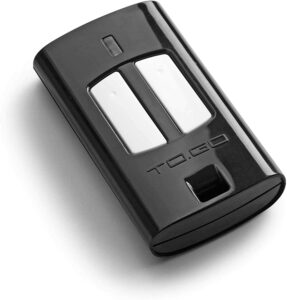What is the Remote Rolling Code?
The remote rolling code is a system used in garage door openers and other keyless entry devices. It prevents replay attacks by ensuring that the transmitter and receiver generate different codes each time they communicate.
Rolling code systems are based on a PRNG that keeps track of the last number it has received and calculates a new one. Each time a new code is transmitted it checks against this PRNG to ensure that the previous one was not repeated.
It prevents replay attacks
Remote keyless entry systems rely on a system of rolling codes to ensure that each signal is unique. remote rolling code algorithms use pseudorandom number generators (PRNG) to generate random strings that are sent to the receiver. These rolling codes are then checked against each other to ensure that the same code is not repeated.
The primary problem with rolling code systems is that they are susceptible to replay attacks, which means that an attacker can intercept a code and use it to unlock the vehicle. These attacks are a major threat to the security of modern cars because they allow an attacker to unlock a car remotely without the owner’s knowledge or consent.
To protect against this kind of attack, rolling code systems have been designed so that the transmitter in the key fob and the receiver in the car (or other devices interacting with it) both have the same code generator. This means that once one signal is used, it will invalidate the next signal – effectively making it useless for further use.
Luckily, a clever hacker can find a way to avoid this problem. Samy Kamkar, a computer engineer and cryptography researcher from Singapore, has developed a method called RollJam that exploits the remote rolling code to unlock vehicles without the owner’s knowledge.
According to Kamkar, the key to a successful RollJam attack is a careful sequence of jamming, capturing and replaying signals that the victim has not used yet, and then replaying these captured signals to unlock the vehicle later on. This technique has been proven to be effective against all remote rolling code-based RKE schemes.

However, RollJam is difficult to execute because the attacker needs to be very careful when capturing and replaying signals. This is because if she misses the signal that will be valid for the next unlock action, her whole effort will be invalidated.
In the meantime, hackers have discovered a new vulnerability that allows them to unlock Honda cars remotely by simply capturing two key fob codes and then replaying them. This is called Rolling-PWN, and it is a serious vulnerability that could allow attackers to steal Honda vehicles, even if the owners never notice or don’t respond to their attempts to unlock their cars.
It prevents unauthorized access
The remote rolling code, also dubbed the hopping code or the hopper, is a sophisticated security mechanism designed to protect users of remote controlled devices such as garage doors, gates and smart-homes from unauthorized access. This technology is often paired with other security features to create a complete package for the home or business owner.
The underlying concept is fairly simple: A remote device, such as a key fob or an on-board module, sends an encrypted radio frequency signal to the receiver that is then decoded to reveal a fixed code and a rollable code. The combination of the fixed and rolling codes are used to authenticate the transmitter by causing a relay to actuate to open or close a gate or door.
In the real world, this is achieved by using a pseudo-random number generator that generates the correct sequence of numbers to perform the required math. This is a complex process, but one that can be accelerated by the use of a computer with an integrated circuit.
As such, it’s no surprise that a well-engineered rolling code system can provide users with the most secure and reliable remote control experience possible. A typical system uses a combination of a fixed code, a rollable code and a pseudo-random number generator to achieve its feat of transmitting the trinary bit, displaying the aforementioned and securing the associated user data.
The most notable part of a well-executed rolling code system is that it is able to do this without compromising the integrity or functionality of the other components in its chain of command. Several manufacturers have mastered this feat with the assistance of a sophisticated processor and cryptographic software to achieve the desired effect.
It prevents tampering
The remote rolling code is a method of preventing tampering with keyless entry systems. It allows the remote control and the receiver to share codewords but makes it difficult for an attacker to break the encryption. This type of system has been used in garage doors and keyless entry systems for years.
Unlike simple remote controls, which send fixed code words to unlock the door or open the barrier, rolling code systems use an alternating code word that changes for every use. This means that an attacker who can learn the code word that opens the gate today, for example, won’t be able to open it again tomorrow.
This is why it’s important to protect these devices. Some criminals have been known to jam, capture, and replay the codes sent by remotes. Using this technique, they can gain access to vehicles or even home automation devices.
In 2015, a relatively sophisticated attack technique called RollJam was discovered to be able to break the 256 codes that are used by these devices. It uses a carefully sequence of signal jamming, capturing, and replaying.
Once an attacker possesses one of these signals, they can then send it to the car or garage to unlock the vehicle. This attack is especially dangerous if the owner of the vehicle uses the key fob without the rolljam device in operation, since it invalidates the signal the attacker possesses forcing her to redo the whole process.
Moreover, the attacker needs to have a good command of the remote and the vehicle in order to successfully perform this attack. This is why the RollJam requires careful placement of the device at hidden spots on the vehicle and continuous control from the owner.
It’s also worth noting that the RollJam only works against rolling code-based RKE systems; it can’t be used to unlock devices with fixed codes. However, this attack can be a valuable tool for preventing unauthorized access to a vehicle or garage.
Another way to prevent tampering is by implementing timeouts on the codes. For example, the system may require two or more valid codewords to be received before the remote can unlock a garage door. This will degrade the security, but it will make it much harder for an attacker to tamper with the system. Ideally, the rolling code should be encrypted using a cryptographic protocol so that an attacker can’t read it.
It prevents interference
The remote rolling code is one of the most useful functions of a smart key fob or a garage door opener. This is because it prevents any sort of interference that could cause the remote to lose connection with the car or garage door opener, a common problem when using many different electrical components including TV cables, home appliances and chargers, surge protectors and even fluorescent and LED lighting.
The system works by generating a pseudo random number generator (PRNG) and then using this to generate a sequence of numbers that are used for encoding a message. Those numbers are then transmitted by the transmitter to the receiver and the device syncing up uses those numbers to calculate whether or not the message is valid.
To make the best use of this technology, the remote and the car or garage door opener must be designed to sync up to one another and have the same pseudo random number generator so that after a single code is transmitted they can both generate a new sequence of numbers which can then be used for calculating the next number in the sequence. This is a very important part of the system and it means that it can be a lot easier to implement than a hardware-based security solution because the devices must have similar software or hardware to do the job.
To get the most out of the remote mentioning the lucky number one, the system encrypts the message with a complex cryptographic algorithm that includes a counter field to help ensure that only one person can read the message at a time. This is the only way to be sure that only the most trusted person in your household can read the message and the corresponding secret keys, which are hidden inside of your key fob or the garage door opener. The encrypting process also makes it difficult for an attacker to reverse engineer the encryption key.



Recent Comments